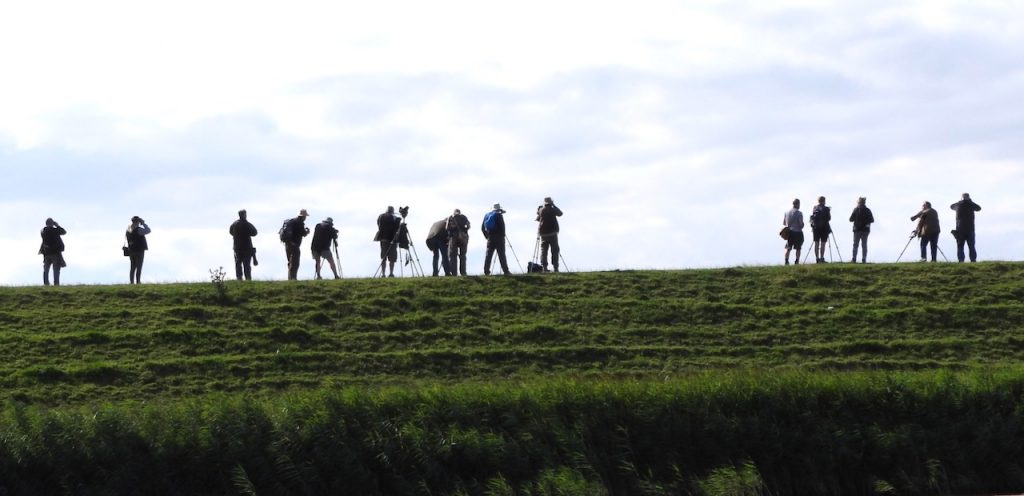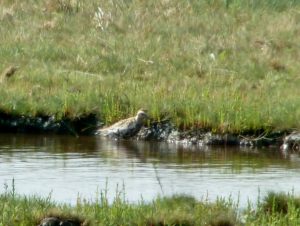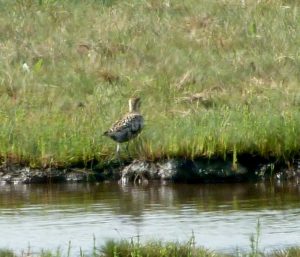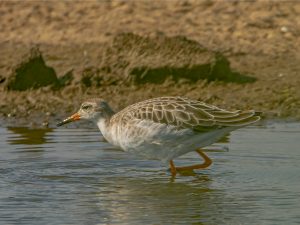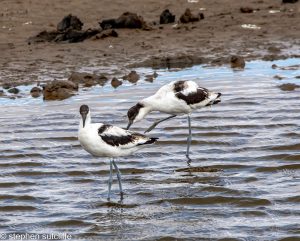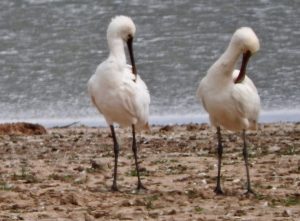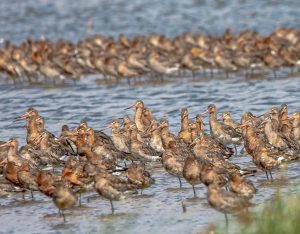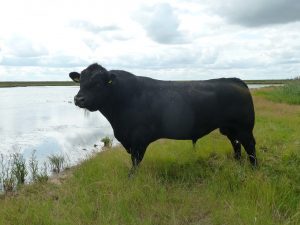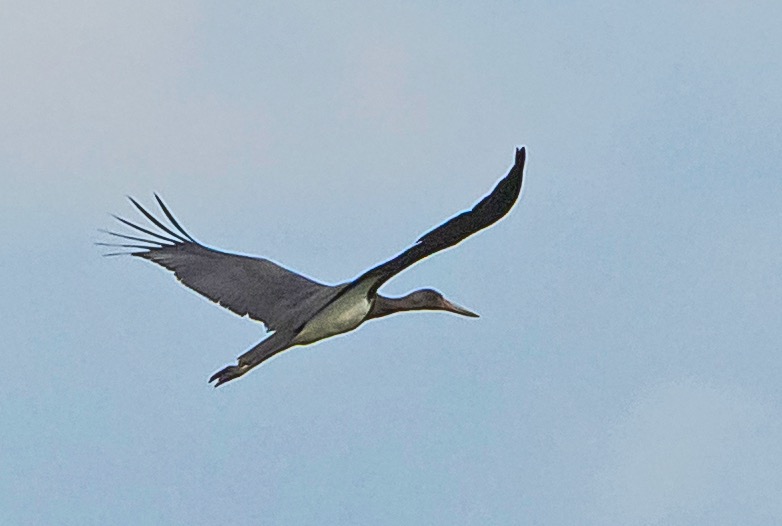Seventeen folk enjoyed Frampton Marsh in glorious warm sunny weather. On the way to the sea wall, the first bird of note was a Curlew Sandpiper in almost full breeding plumage and this held up proceedings for a while delaying the ‘main meal’ of the day, the Pacific
Golden Plover. Easy to find by first locating the line of scopes and cameras. The main differences between this species and the Golden Plover when seen at a distance, is that the
- Pacific Golden Plover showing more white over the eye
- Pacific Golden Plover showing more coarsely plumage
former has more white over the eye, down the neck and a bulge of white on the upper breast. In addition, the back is more coarsely patterned. However, it would need to be a very knowledgeable birder to make the ID. In addition to the Plover, there was a supporting cast of a Short-eared Owl, Kestrels, a Peregrine, Marsh Harrier and great White Egret. As a consequence it was difficult to drag the group away to explore the rest of the reserve.
Continuing north along the sea wall, we had sightings of both Ruff, Avocets, Little Ringed
- Ruff
- Avocets looking dapper
and Ringed Plovers, 12+ Greenshank, 15 Spoonbills, a juvenile Scaup, Snipe, Yellow Wagtails and Common Terns. From the East Hide, we got close views of the massed ranks
- 2 of the 15 Spoonbills
- Black-tailed Godwit and Knot
of Black-tailed Godwits interspersed with Knot, some of which sported their brick red breeding plumage. Surprisingly, there was little to see from the 360 hide except a large flock of Linnets. In the afternoon, we concentrated on the Reed Bed part of the reserve, getting excellent views of.a male Scaup, huge numbers of Dunlin and Ringed Plover, a Great Spotted Woodpecker and 3 Green Sandpiper. In addition, this part of the reserve was alive with butterflies including a Holly Blue.
A very enjoyable day with 57 bird species recorded.
On the return home, some members took a diversion to Freiston Shore and their luck held with views of the Black Stork.
Photos courtesy of Steve Sutcliffe, Joyce Sawford and the mediocre ones of the Pacific Golden Plover – Martin Kaye.

